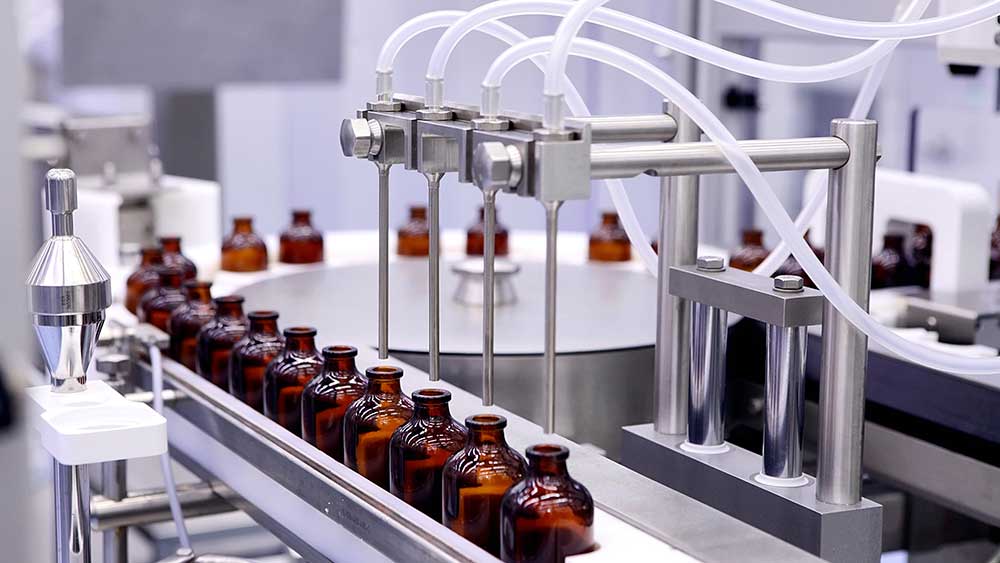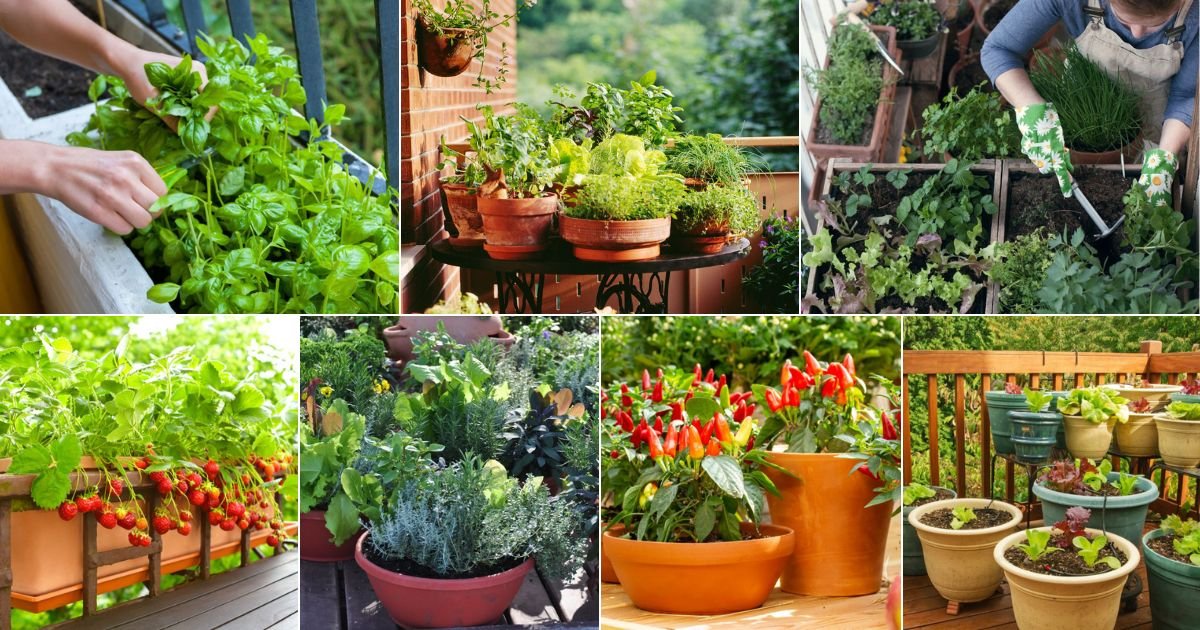Small gardens, porches, and patios are perfect for container gardening! Containers allow for easy transporting, cultivating, and harvesting. Seasoned grower Jerad Bryant shares nine easy ways to encourage healthy and robust growth from your potted plants.
Potted plants are similar to those grown in the ground, but their roots enjoy a cozy, enclosed space. With the right setup, they’ll flourish with minimal care. Healthy container plants depend on proper materials, planting techniques, and care routines.
Maybe you garden on a patio, rent your home, or simply want extra planting space. Whatever your situation, these steps will help you create an ideal environment for growing crops, fruits, and wildflowers.
We’ll discuss the best potting soils, fertilizers to use, and how to care for transplants. The right materials depend on your plants—cacti and succulents have different needs than fruit trees or vegetables. Understanding these needs is key to a thriving container garden.
Start With Good Soil
:max_bytes(150000):strip_icc()/healthy-soil-and-how-to-make-it-2539853-hero-fdf9b0280dca41cb8ae9614e6fc4a0b0.jpg)
A woman scoops fresh black soil from a plastic bucket with a garden trowel.
Good drainage is crucial for delicate root systems.
Choosing the right soil is the first step! In-ground plants tolerate imperfect mixes with too much clay or sand, but potted plants prefer loose, airy, and porous blends. The ideal soil varies based on the plant’s natural habitat and growth habits.
Succulents, cacti, fruit trees, vegetables, and perennials each thrive in slightly different mixes. Cacti and succulents need fast-draining soil with sand, perlite, or pumice—they struggle in moisture-retentive blends. Vegetables and perennials, however, prefer damp, absorbent soils.
For outdoor plants, natural potting soils work best. These contain aged forest products, worm castings, and compost, which suit most outdoor containers. A blend like FoxFarm’s Happy Frog® is ideal—it’s packed with nutrients, microbes, and materials that help roots thrive in pots.
For fussy plants like cacti, use a mix with coarse sand or crushed granite to prevent waterlogging. You can amend Happy Frog® with these materials. Epic Gardening’s Jacques Lyakov recommends this mix for drought-tolerant plants:
- 3 parts Happy Frog® Potting Soil
- 2 parts Coarse Sand or Crushed Granite
- 2 parts Pumice or Perlite
Select the Right Container
The Right Container
A gardener transplants yellow primroses into a ceramic pot beside a clay pot with a young tree.
A deep pot prevents stress later.
Container size is vital for healthy plants. Some crops have deep roots, while others spread near the surface. Taproot-heavy plants struggle in shallow pots.
Most crops need pots at least a foot deep. Heavy feeders like tomatoes, peppers, and squash do better in two-foot-deep containers. Start with the right size, and your plants will reward you with strong growth.
Fruit trees and large plants need ample space. Apples, peaches, and plums thrive in 20-gallon or larger pots.
Some containers have self-watering reservoirs, where water seeps in through a wick. These can harm plants if watered like regular pots. Instead, refill the reservoir only when empty to avoid sogginess. They’re great for rentals or vacation homes.
Follow Spacing Guidelines

A gardener transplants strawberry seedlings into an elongated pot.
Proper spacing saves you from thinning later.
Spacing is as important as pot size. Crowded plants yield less, while too much space invites weeds. Seed packets list spacing requirements—follow these even for saved seeds.
For example, if you save broccoli seeds, use spacing guidelines from a similar variety like ‘Di Cicco.’
Leafy greens are perfect for tight spacing. Harvest them continuously, allowing nearby plants to fill gaps. Lettuce can be cut four inches above the soil and will regrow in cool weather.
Choose a Good Location

A cozy garden with potted carrots, lettuce, strawberries, and tomatoes.
Lettuce appreciates afternoon shade.
Plants have different light preferences. Sun-lovers like peppers, tomatoes, and fruit trees need six to eight hours of direct sunlight. Leafy greens and shade plants prefer partial shade.
Since pots are movable, adjust their placement as needed. If leaves scorch, provide shade; if stems stretch, give more sun.
When relocating plants, do it gradually. Introduce them to the new spot for a few hours daily, increasing exposure over two weeks. This mimics seedling hardening-off.
Add Compost
:max_bytes(150000):strip_icc()/GettyImages-129288334-581823c15f9b581c0b101bc6.jpg)
Hands hold dark compost over kitchen scraps.
Compost boosts any garden.
Compost is a powerhouse for soil health. Made from decomposed kitchen scraps, garden waste, and leaves, it enriches soil. Turn the pile daily and keep it moist—within weeks, you’ll have nutrient-rich humus.
For potted plants, spread a 1–2 inch layer of compost atop the soil, avoiding the stem. Water it in, and watch plants thrive.
Alternatives like straw, leaf mold, or wood chips also insulate and feed roots. Fallen leaves are a free, natural option.
Fertilize Regularly
:strip_icc()/Fertilizing-plants-0440837aeee64749832645ba62572f95.jpg)
A hand sprinkles granular fertilizer at a tree’s base.
Acid-loving plants need low-pH food.
Regular feeding keeps plants vigorous. Nutrient deficiencies lead to stunted growth, weak stems, or pests. The right fertilizer depends on the plant.
Flowering and fruiting plants need balanced fertilizers high in phosphorus and potassium. Leafy greens prefer nitrogen-rich mixes. Blueberries and rhododendrons thrive with acidic fertilizers.
Choose from liquid, granular, or powdered organic/synthetic options. Organic types are gentler, avoiding salt buildup. Follow label instructions for dosage.
Ensure Consistent Moisture

A hand waters tomato seedlings in pots.
Deep watering helps in heat.
Water is essential for nutrient transport. Potted plants dry out faster than in-ground ones.
Water needs vary: cacti and succulents prefer infrequent watering, while annuals need consistent moisture. Most plants need water weekly, increasing in summer.
Large pots prevent rapid drying. Root-bound plants struggle to absorb water—repot them if needed.
Protect Tender Plants

A balcony garden with terracotta pots of peppers and tomatoes.
Afternoon shade cools plants in heatwaves.
Shield plants from frost with row covers—drape them at night and remove when temperatures rise.
For sun protection, use shade cloth, umbrellas, or taller plants. Move pots to cooler spots during heatwaves. Keep soil moist and water daily in extreme heat.
Frost-tender plants like peppers or coleus may need indoor wintering. Take cuttings in fall and grow them indoors until spring.
Repot Overgrown Specimens

A woman repots a parsley plant with a large root ball.
Repot when roots escape drainage holes.
After a year or more, plants outgrow their pots. Repot in spring or fall for fresh soil and space.
To repot, tilt the pot and gently loosen the rootball. Trim any clinging roots, then transfer to a new pot with fresh soil (like Happy Frog®). Water thoroughly.
Repotting frequency depends on growth speed. Roots peeking through holes or surfacing indicate it’s time.
FAQs and Conclusion
FAQs
- What kind of soil is best for container gardening?
- For most outdoor plants, use a loose, airy, and well-draining potting mix. Cacti and succulents require a mix with coarse sand or pumice, while vegetables and perennials prefer moisture-retentive soil. A high-quality mix like FoxFarm’s Happy Frog® is suitable for most plants and can be amended for specific needs.
- How do I know if my plant needs repotting?
- Plants typically need repotting if roots are growing through the drainage holes or surfacing. If your plant is growing slowly or seems to be outgrowing its pot, it’s time to repot. Spring or fall are the best times to repot for fresh soil and extra space.
- How often should I water container plants?
- Container plants dry out faster than ground-planted ones, so they generally need watering once a week. However, watering frequency can vary based on the plant type, the size of the pot, and weather conditions. For example, cacti and succulents require less frequent watering, while annuals may need more.
- Can I grow fruit trees in containers?
- Yes! Many fruit trees, including apples, peaches, and plums, can thrive in large containers. Ensure the container is at least 20 gallons in size and has adequate drainage. These trees also need a lot of sunlight, so place them in a spot where they can receive 6-8 hours of direct sunlight per day.
- What’s the best way to fertilize container plants?
- Fertilize regularly with a balanced fertilizer based on your plant’s needs. Flowering and fruiting plants need fertilizers rich in phosphorus and potassium, while leafy greens prefer nitrogen-rich fertilizers. Organic fertilizers are gentler and avoid salt buildup in the soil.
- How do I protect my plants from extreme weather conditions?
- During heatwaves, move plants to cooler spots or use shade cloth to protect them from the sun. For frost protection, cover your plants with row covers at night, and uncover them during the day. Tender plants, such as peppers, may need to be brought indoors during the winter months.
Conclusion
Container gardening offers a fantastic opportunity to grow plants in small spaces like patios, balconies, or even indoors. By selecting the right soil, container, and care techniques, you can create an ideal environment for a wide variety of plants. Proper spacing, regular watering, and consistent fertilizing are essential for healthy plant growth. Additionally, protecting your plants from extreme weather and repotting them when necessary will help ensure they thrive year-round. With these simple but effective steps, you’ll be on your way to a flourishing container garden, whether you’re growing herbs, vegetables, or ornamental plants. Happy gardening!

